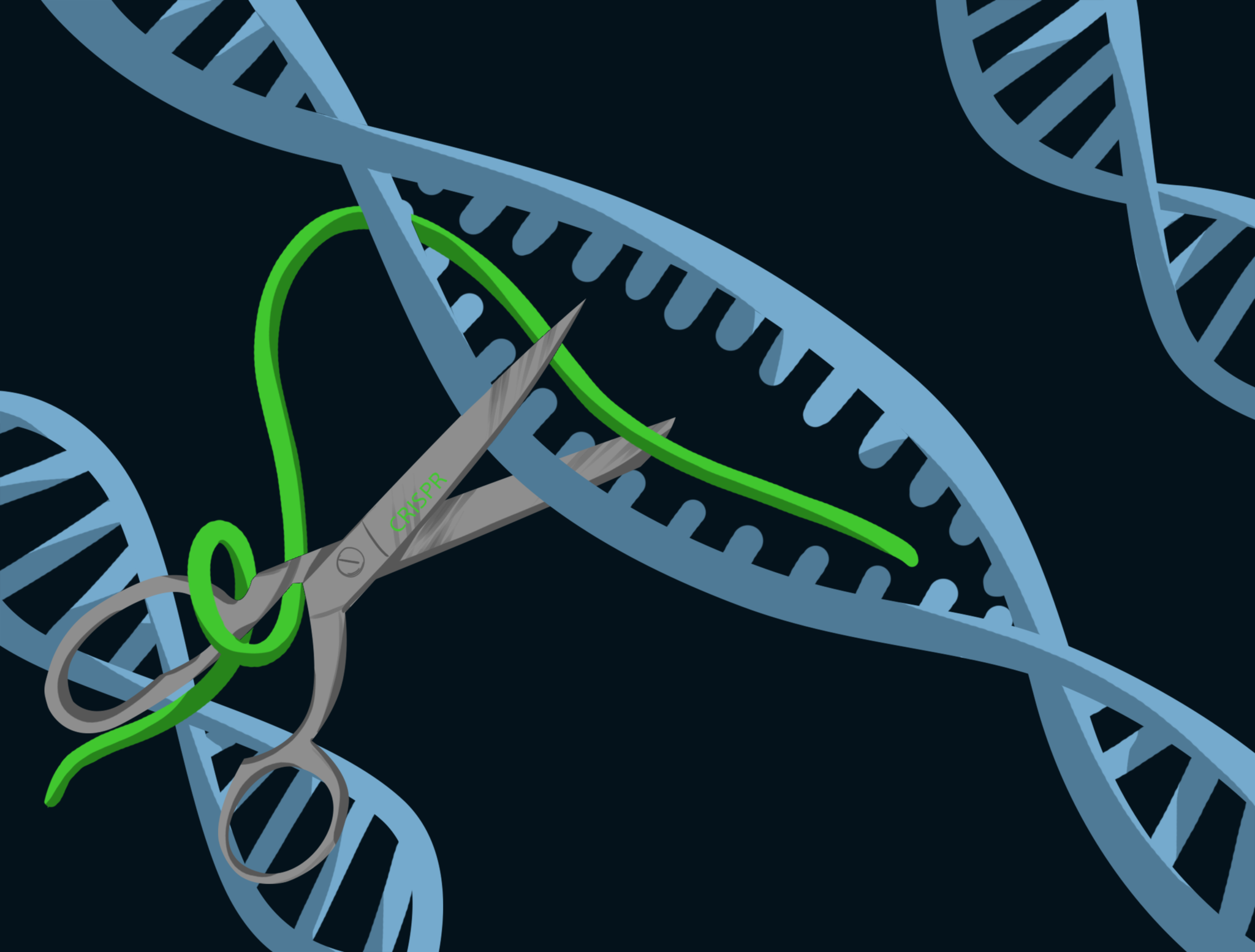Yale study details method to increase accuracy and safety of CRISPR gene editing
The Glazer Lab at Yale has published a study discussing the possibility of increasing the accuracy and safety of CRISPR-Cas9 gene editing through the use of peptide nucleic acids.

Ellie Huh
A new study published at Yale’s Glazer Lab has important implications for enhancing the accuracy and efficacy of CRISPR-Cas9 gene editing.
The research team was led by Nicholas Economos MED ’23, a MD-PhD candidate in the Glazer Lab who was the first author of the paper, and Peter Glazer, professor of therapeutic radiology. The study set out to investigate a new way of increasing the accuracy and safety of CRISPR-Cas9 gene editing through the use of peptide nucleic acids, called PNAs, to treat patients with genetic diseases.
“There was no precedent for this, and we had never done anything like this,” Economos said. “This was really just kind of a cool idea. Initially when we were using [PNAs] as inhibitors and I was first getting that data back, I was like ‘Wow, this is a real effect. It’s always working and sequence dependent, and I’m doing all of the controls and they’re all working.’ It really was kind of a discovery moment, which I feel like in lab and especially in a Ph.D. kind of situation is a rare thing to get.”
CRISPR-Cas9 performs gene editing by utilizing the Cas9 enzyme, which cuts DNA at specific sequences identified by guide RNA and its homologous sequences. Because PNAs can bind strongly to DNA and RNA, Economos and his colleagues became curious as to how PNAs could impact CRISPR if permitted to bind to the 20-nucleotide target sequence called the “spacer” of guide RNA, which helps guide the Cas9 enzyme. These are called antispacer PNAs, where “anti” refers to the binding that occurs between PNAs and spacers of RNAs. This led to a series of experiments in which Economos designed various types of PNAs and combined them with different CRISPR target genes.
The experiments demonstrated that it is possible for PNAs to inhibit CRISPR-Cas9 activity by binding to a particular region of the guide RNA’s spacer, acting as an “off-switch” for the enzyme. This could play an important role in regulating the technology to prevent harm to patients. For example, in order to prevent off-target effects that could cause toxic events, PNA molecules could be sent to specific organs to shut off Cas9 activity, according to Economos.
“As we start to move forward to putting CRISPR into the bloodstream and treating people systemically with CRISPR, there’s some issues around making sure that the correct organ system is targeted in those types of things,” Economos said. “There’s this really big need for a tool to control and improve the accuracy and safety of using this technology in humans because ultimately there are some dangers that come with using powerful technology.”
The team also found that designing PNAs that tend to bind to particular regions of the guide RNA’s spacer could increase the accuracy of gene editing with CRISPR-Cas9. Different regions of the spacer can have different functions, so by designing PNAs with specific binding tendencies, it is possible to improve the accuracy of gene editing by ensuring that the desired effects take place.
This also increases the likelihood of CRISPR-Cas9 reaching and interacting with its intended target site, while simultaneously reducing opportunities for unwanted off-target effects. An example Economos gave of a specific “off-target” effect that could occur would be Cas9 being erroneously activated in the liver when other organ systems are intended targets. This could be remedied through the usage of PNAs.
“[One application of this technology] is to modulate the activity of CRISPR-Cas9 type technologies,” Glazer said. “CRISPR can be used to cut DNA and mediate gene editing, but you can also modify the Cas9 protein and make it a fusion protein with factors that regulate gene expression. You can have what they call CRISPR activation or CRISPR inhibition.”
This project was selected as a finalist for the 2022 Nucleate Activator Program, a national incubator that strives to develop the next generation of biotechnology companies and clinical treatments. Economos hopes to eventually apply the findings from this venture to produce safer methods of gene editing for patients.
“This particular project is just discovering something new and developing it so that other people can use it and advance science as a whole and work towards helping people together in a collaborative manner,” Kelly Carufe GRD ’24, a graduate student in the Glazer Lab, said.
The Glazer Lab is part of the therapeutic radiology department at the Yale Cancer Center.







